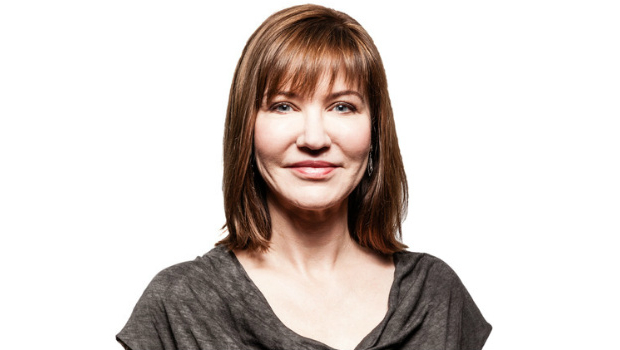Julie Larson-Green, the Microsoft executive who co-led Windows development as recently as last summer and now heads the company’s hardware efforts, will move to the group responsible for Office, where she once worked, according to an internal email obtained by the web site GeekWire.
Her change of jobs was likely triggered by promises made last September, when former CEO Steve Ballmer said that Stephen Elop, the then-CEO of Nokia, would re-join Microsoft after the $7.4 billion (€5.38 billion) acquisition of the Finnish company’s handset business to head an expanded devices group at Redmond.
On one hand, Larson-Green’s departure from the Devices and Studios Group, one of four broad-based engineering divisions created after the 2013 “One Microsoft” reorganisation launched by Ballmer, was not a surprise because of Elop’s imminent arrival.
But last year, in a company-wide email after the Nokia acquisition announcement, Ballmer said that Larson-Green would continue to work in devices. “Julie will be joining Stephen [Elop]’s team once the acquisition closes, and will work with him to shape the new organisation,” Ballmer wrote at the time.
GeekWire first reported on Larson-Green’s job change and published an email she sent to Microsoft employees. According to the email, Larson-Green will report to Qi Lu, the executive who runs the Applications and Services Group, where she will serve as chief experience officer for a team within that group.
Lu’s group is in charge of not only Office, but also some of Microsoft’s most important services, including Bing, OneDrive, Outlook.com and Skype.
Until then, Larson-Green will continue to head the division responsible for the Surface tablet line and Xbox, and for outside video game titles.
The change would have to be considered a demotion in that Larson-Green is a member of the company’s senior leadership team, a group that includes the heads of the four main engineering divisions as well as COO Kevin Turner, CFO Amy Hood and former Skype CEO Tony Bates, an executive vice president in charge of business development and evangelism. They all report directly to CEO Satya Nadella.
In the email, Larson-Green’s future title was not expressed as an executive vice president, the level that makes up the leadership team immediately under Nadella. Instead, she will report to Lu, who does have that title.
Larson-Green will be returning to the group responsible for Office, where she worked for several years as a lieutenant to Steven Sinofsky, the former head of Office who was later promoted to lead Windows development but was ousted from the company in November 2012, just weeks after the launch of Windows 8.
Larson-Green was instrumental in the design of Office 2007’s most striking feature, a “Ribbon” in Microsoft Word that exposed more of the program’s features. Although criticism of the Ribbon was initially sharp, most users, but not all, grew comfortable with the change from the long-time Windows-style menu structure. The Ribbon was later extended to other applications in the Office suite and to some of the programs baked into Windows, like the Windows Explorer file manager.
Prior to that, Larson-Green did user interface (UI) work on Internet Explorer and earlier editions of Office.
She moved to the Windows development group when Sinofsky took command of creating Windows 7. When Sinofsky left Microsoft, Larson-Green was promoted to co-lead the Windows division, working with Tami Reller, formerly the group’s CFO.
In the reorganisation of last summer, Reller became head of a consolidated marketing group.
At one point, Larson-Green was among those touted as possible candidates for Ballmer’s job.
Not surprisingly, Larson-Green has been a fierce defender of Windows 8 and the radical strategy the operating system embodied, the pushing of a touch-first, tile-based UI at the expense of the traditional desktop.
In a May 2013 interview at the Wired Business Conference, Larson-Green reiterated Microsoft’s dedication to the Modern UI and its colourful Start screen. “We believe fully in the Start Screen and the model of having these live tiles,” Larson-Green said then. Later in the interview, she said that the update, which was eventually named Windows 8.1, would not sport “major changes,” a hint that Microsoft would not automatically push customers past the Start screen.
But she also gave some mixed signals. “We’re principled in the direction we’re heading, but we’re not stubborn,” she asserted. “We’re not going to spite you.”
This last comment drew criticism from at least one analyst, who said she sounded and acted defensive as she responded to criticism of Windows 8.
Since then, Microsoft may have changed its mind on the boot-to-desktop setting, an option first offered in last October’s Windows 8.1. Leaked builds of this spring’s Windows 8.1 Update 1 indicated that on non-touch hardware, Microsoft will automatically shunt users past the Start screen and straight to the desktop.
Other changes in Windows 8.1 Update 1 will re-emphasise the desktop, and the mouse and keyboard controls of that UI.
Larson-Green has been with Microsoft for 20 years, according to her biographic sketch on the company’s web site. In the email obtained by GeekWire, Larson-Green said she would continue leading the Devices and Studio Group “until the Nokia deal closes and Stephen Elop makes his transition to Microsoft.”
She will be developing what she called the “Digital Life and Digital Work Experience Substrate,” perhaps, said long-time Windows observer Mary Jo Foley, to create consistent user experiences (UXs) across devices for such services as Bing, OneDrive and Skype.
Gregg Keizer, Computerworld US







Subscribers 0
Fans 0
Followers 0
Followers